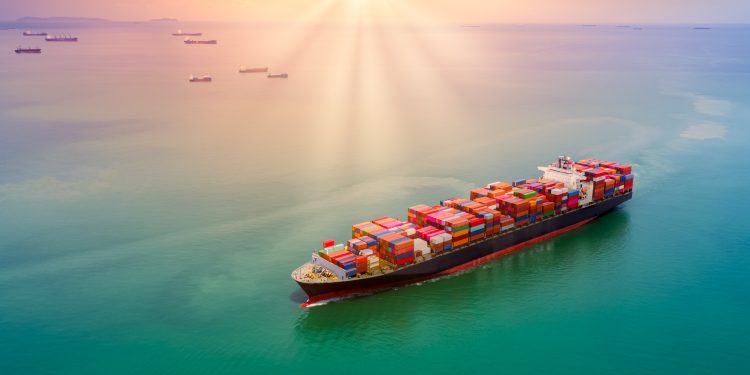The adoption of CII measure was the key tangible outcome of the IMO’s MEPC 76 last summer for the future of shipping emissions, which left the shipping industry divided regarding the level of ambition agreed for reducing the sector’s environmental footprint.
Although the measure practically enters into force as late as 2023, shipowners are already in the process of getting their ships certified for EEXI and calculating CII at the same time, in order to be prepared. But what does this CII refer to?
To remind, the IMO’s contradictory MEPC 76 meeting last June adopted the already-agreed amendments to MARPOL Annex VI, setting two new measures into effect at the start of 2023 – the energy efficiency index for existing ships (EEXI) and the carbon intensity indicator (CII), aiming to improve energy efficiency in line with the 2018 Initial IMO Strategy. This strategy aspires carbon intensity for international shipping to decline through a 40% reduction by 2030, and a 70% reduction by 2050 compared to 2008.
What is the CII?
Applying to all cargo, RoPax, and cruise ships above 5,000 GT, the CII is an operational index based on the Annual Efficiency Ratio (AER). This ratio is given in grams of CO2 emitted per cargo-carrying capacity and nautical mile, measuring all carbon emissions from all ballast and laden voyages, anchorage, and port stays, all divided by the deadweight and distance sailed in a year.
In simple terms, the Carbon Intensity Indicator (CII) is a measure of how efficiently a ship transports its cargo. Based on this, the ship is then given an annual rating ranging from A to E:
A – major superior performance level
B – minor superior performance level
C – moderate performance level
D – minor inferior performance level
E – inferior performance level
The rating thresholds will become increasingly stringent towards 2030, with the carbon reduction factor starting from 5% in 2023. After this, 2% will be added yearly. A ship rated D or E for three consecutive years will need to submit a corrective action plan explaining how the performance level can be increased.
What is SEEMP and how does it relate to CII?
The aforementioned performance level will need to be recorded in the ship’s Ship Energy Efficiency Management Plan (SEEMP), a mandatory, ship-specific document that lays out the plan to improve a vessel’s energy efficiency in a cost-effective manner. The SEEMP shall include the Ship Fuel Oil Consumption Data Collection Plan (DCP), which includes a description of the methodology for data collecting and the reporting processes.
What does the CII practically mean for ship owners?
Beginning January 1st, 2023, ship owners will be required to document their Attained Annual CII and verify it against the Required Annual CII to determine their vessel’s operational carbon intensity rating. This means that they can start already to prepare the following as part of their SEEMP:
- A description of the methodology to be used to calculate the ships Attained Annual Operational CII, and the process that will be used to report this value to the Administration;
- The Required Annual Operational CII for the next 3 years;
- An implementation plan documenting how the Required Annual Operational CII will be achieved during the next 3 years; and
- A procedure for self-evaluation and improvement.
How is the CII calculated?
For Bulk carriers, Tankers, Container ships, Gas carriers, LNG carriers, Ro-Ro cargo ships, General cargo ships, Refrigerated cargo carriers, and Combination carriers, the calculation method used is:

For cruise passenger ships, Ro-Ro cargo ships, and Ro-Ro passenger ships, the calculation method used is:

DO YOU KNOW?: Read in this series
What are possible options for compliance?
From a technical perspective, all ship owners and shipbuilding stakeholders must consider and assess how they will support compliance with EEXI. There are several technical and operational improvements possible for shipowners who must reduce their vessel emissions and improve their fuel consumption, such as:
- Switching to alternative, low-carbon fuels
- Optimizing operations
- Reducing speed
- Retrofitting vessels with energy-efficient technology
- Alternative propulsion techniques (e.g., wind assistance)
Meanwhile, it is possible that charterers will also have a major influence over the CII by selecting the speed of the ships they charter.
What is the difference between the EEXI and CII?
The EEXI is a one-time certification equivalent to its predecessor, the EEDI (Energy Efficiency Design Index) phase 2 or 3 concerning design parameters of the vessels. The EEXI measures CO2 emissions per transport work, purely considering the ship’s design parameters. The CII is an operational indicator to be assessed annually from 2023 with yearly stricter emission limits. The EEXI and CII are applicable to the same ship types. The difference is that CII ratings will apply to ships 5,000 GT and above regardless of propulsion type, according to DNV.
Did you know?
The Annual Efficiency Ratio (AER), where the CII is based, is also used in the Poseidon Principles, the first global banking framework adding climate considerations into lending decisions.








































































































































